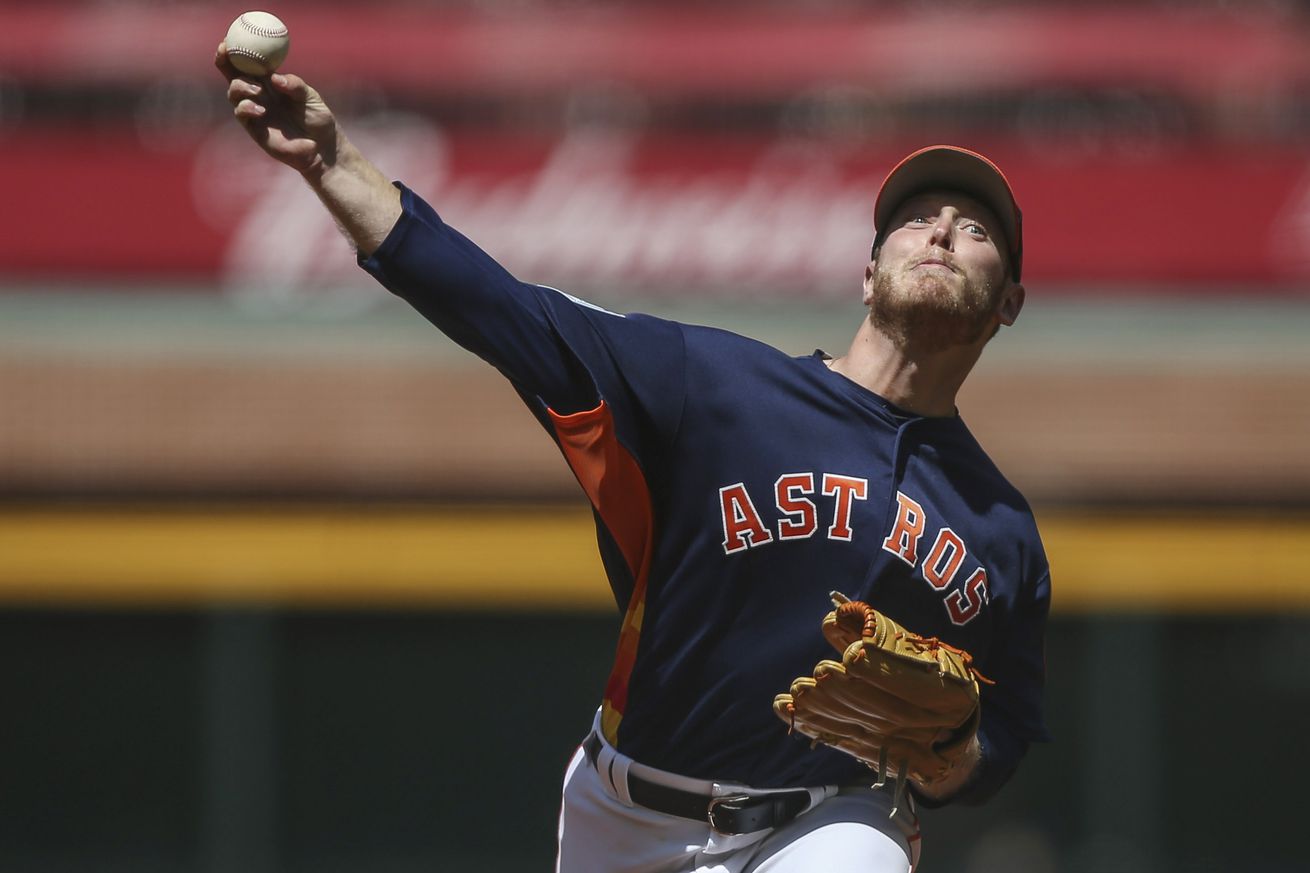
Drafts can bring fond and not so fond memories. The Astros have had some good ones in the Jim Crane reign. No draft has signaled the post-McClain era more than the 2012 draft. That was Luhnow’s first year at the helm and it yielded McCullers and Correa. The only subsequent draft that promised more top-level talent than 2012 was 2015 (Bregman and Tucker in the top 5; how about that for nailing it! If you re-drafting, Bregman and Tucker probably go 1-2). After the unjust stripping of draft picks in 2020 and 2021, the 2022 draft was heavily anticipated. Lost in the shuffle, however, was the 2017 draft. Did you know that thirteen players from that draft have reached the show? That’s right, 13!
Like the 2022 draft, the 2017 draft was dominated by college pitchers. The Astros took six college arms in the top ten rounds: Bukauskas (1), Corbin Martin (2-comp), Tyler Ivey (3), Peter Solomon (4), Mushinski (7), and Bielak (10). 2017 marked the shift in college pitchers from safe bets to higher risk guys. While all six of those pitchers made it to the show, none made an impact, and the top three have been derailed by unfortunate injuries.
The high-end hitters from that draft haven’t really worked out. Joe Perez (2) did make it to Houston, but only logged one AB, and Matijevic (2-comp) hasn’t done much yet. The real value ended up being in the later rounds, where Corey Julks (8), Mike Papierski (9), Jake Meyers (13), Chas (21) and Josh Rojas (26) were drafted. The last three accumulated most of the collective bWAR for the draft class. That’s a darn good draft in terms of MLB yield, even if it hasn’t produced a bonafide starting player.
That’s a long prelude to revising the 2022 draft, where Drew Gilbert (1), Jacob Melton (2), and Ryan Clifford (11) could all be considered first round talent. There’s good reason to believe that the ultimate success of that draft (and the capacity for Houston to keep on extending that window to 2030) will depend on at least one of that trio turning into a first-division regular.
Through three weeks of the MILB season, however, it’s unquestioned that one major engine of minor league on-field excitement has been the early returns from the 2022 college arms. The Astros loaded up on college arms even more than the 2017 draft, with seven in the first ten rounds (by comparison, 2018 and 2019 had three college arms apiece). And while Brett Gillis is on the shelf, the other six in this group have opened some eyes, mostly as piggybacked starters at A and A+. Let’s take a look.
Andrew Taylor (2-comp): he was rested after throwing 84 college innings in 2022. He’s young for his draft class (in September he turns 22) and he’s only thrown 8.1 IP at Fayetteville. In those innings he’s K’d 15 of the 33 batters faced. That’s insane.
Michael Knorr (3) is sixteen months older than Taylor but was still put on the same rest plan. He’s also thrown just 8 innings, and K’d 15 of 33 while yielding only one run. The dominance of this tandem is on full display in this clip.
Trey Dombroski (4) just turned 22 and has made one more appearance than Knorr and Taylor. He was a control pitcher in college, so his walk rate is a little surprising in his 13 innings so far (14.5 bb%). His last outing he K’d 8 over 4 hitless innings. On the season, he’s got a 2.25 ERA and is striking out 33% of hitters.
Nolan Devos (5) turned heads in his first outing when he threw 4 hitless innings, striking out 9. He’s scuffled a bit since with walks and run prevention (4.22 ERA, 1.50 WHIP, and a 14.9 bb%), but his FIP is still 2.63 and he’s striking out 38% of hitters.
AJ Blubaugh (7) came on the radar as a dominant reliever in the 2021 Cape Cod League. His stats at UW-Milwaukee were not great. He got in 3 games last year at Fayetteville (3/20 bb/k in 13 innings), and was the only pitcher from the 2022 draft sent straight to A+ ball this year. Across three appearances he’s thrown 11.2 IP, K’d 14 and walked 3. He’s hanging in there with a 3.56 FIP in pitcher-challenged Asheville and is filling up the zone.
Tyler Guilfoil (8) was a multi-inning relief weapon in the SEC last season, making 21 appearances (none starts) and throwing 51 IP for U Kentucky. He’s the oldest of this group, having turned 23 in January (even the four-year guys in this class are young for their grade), and has a WHIP of 0.94 across 11.2 innings for the ‘Peckers. He’s excelled in run prevention (1.54 ERA) and after struggling with control in his first appearance, has walked 2, K’ed 10 and allowed zero runs in his last two outings, totaling 9 IP.
Sometimes teams will fast-track college arms for a relief role, but Dana Brown has given all these guys a chance to tandem start. And so far the results have been impressive. Detractors might say that good college arms should fare well in the Carolina League during their first full season. But this degree of dominance is surely not to be taken for granted. All of the Fayetteville arms have at least performed up to early expectations, if not surpassed them. If this continues, expect a logjam as by June some of these guys may need a bigger challenge to keep them sharp.
It would be ironic if Jim Clack’s final draft ended up making Dana Brown’s job a lot easier.